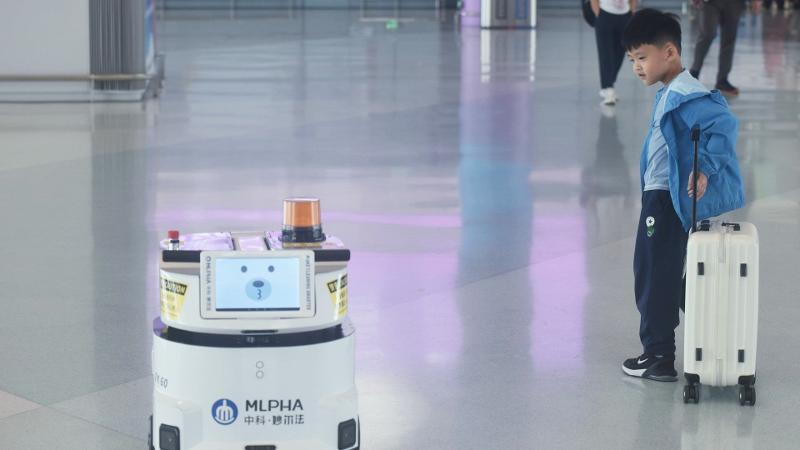Robotics, an ancient discipline dating back to ancient Egypt, has evolved significantly over the years. In this article, we delve into the rich history of robotics and its modern-day applications. From surgical robots revolutionizing healthcare to powerful machines enhancing power technologies and mining operations, the potential of robotics is vast. Join us as we explore the growing importance of machines in all industries and the exciting future that lies ahead.
The Ancient Origins of Robotics
Explore the fascinating beginnings of robotics in ancient Egypt and the human obsession with automata.
The history of robotics can be traced back to ancient Egypt, where water clocks featured human-like figurines that struck bells on the hour. These early automata marked the beginning of humanity's fascination with creating mechanical aids.
Throughout history, the concept of automata continued to captivate human imagination. From ancient Greece to the Middle Ages, inventors and engineers crafted intricate mechanical devices that mimicked human movements.
Fast forward to the 20th century, when the term 'robot' was coined by Czech author Karel Capek in 1920, and the modern era of robotics began.
The Booming Robotics Industry
Discover the exponential growth of the robotics industry and its projected future worth.
The robotics industry has experienced remarkable growth, with a current worth of over $63 billion. Experts predict that by 2030, it will reach a staggering $218 billion.
This exponential growth can be attributed to the increasing adoption of robots in various sectors, including healthcare, manufacturing, and power technologies.
As advancements in artificial intelligence (AI) continue to drive innovation, the role of robots is expected to expand further, revolutionizing industries and enhancing efficiency.
Robots in Healthcare: Transforming Surgical Procedures and Beyond
Explore the significant impact of robots in the healthcare sector, from surgical robots to drug production and nanobots.
In the healthcare sector, robots have already made a significant impact. Surgical robots, controlled by skilled doctors, have revolutionized procedures, enabling precise and minimally invasive surgeries.
But the potential of robots in healthcare extends beyond the operating room. With the development of AI, robots can enhance drug production by improving the maintenance of cold chains, ensuring the integrity of temperature-sensitive medications.
Furthermore, nanobots, tiny robots that can navigate the human body, hold promise for complex brain therapies and targeted drug delivery, opening up new possibilities for medical treatments.
Power Technologies: Harnessing the Potential of Robots
Discover how robots are transforming power technologies, from solar panel placement to remote inspections and exoskeletons.
In the field of power technologies, robots are playing a crucial role in simplifying processes and improving safety. For instance, Sacros Robotics offers machines that streamline the placement of photovoltaic solar panels, enhancing productivity and quality.
Robots are also utilized in remote inspections and maintenance tasks, reducing human risk in hazardous environments. Sarcos Robotics, for example, has developed a versatile robot capable of holding tools, lifting heavy loads, and performing tasks like welding or remote inspections.
Moreover, powered exoskeletons are revolutionizing the power industry by augmenting human capabilities. These wearable suits provide workers with enhanced strength and flexibility, improving efficiency and reducing the risk of injuries.
Mining Operations: Enhancing Safety and Efficiency
Learn how robots are transforming the mining industry, from drones replacing humans to automated drilling processes.
In the mining industry, robots are revolutionizing operations by enhancing safety and efficiency. Drones are increasingly used for monitoring, inspection, and even rock blasting, reducing the need for human presence in hazardous environments.
Automated drilling processes, such as remote drill-rod handling and insertion, are minimizing the risk of drilling-related injuries. Borterra's innovative solutions, ranging from manual to fully automatic options, are improving productivity and reducing accidents.
With the integration of robotics and AI, the mining industry is witnessing a transformation that prioritizes worker safety and operational efficiency.
Conclusion
Robotics has come a long way since its ancient origins, and its impact on various industries is undeniable. From healthcare to power technologies and mining operations, robots are transforming processes, enhancing efficiency, and improving safety.
As the robotics industry continues to grow and advancements in AI propel innovation, we can expect even more exciting developments in the future. From surgical robots revolutionizing medical procedures to drones replacing humans in hazardous environments, the potential of robots is vast.
Embracing robotics in all sectors of industry holds the promise of increased productivity, improved outcomes, and a greener future. As we continue to explore the possibilities, it is clear that robots will play an increasingly important role in shaping our world.

